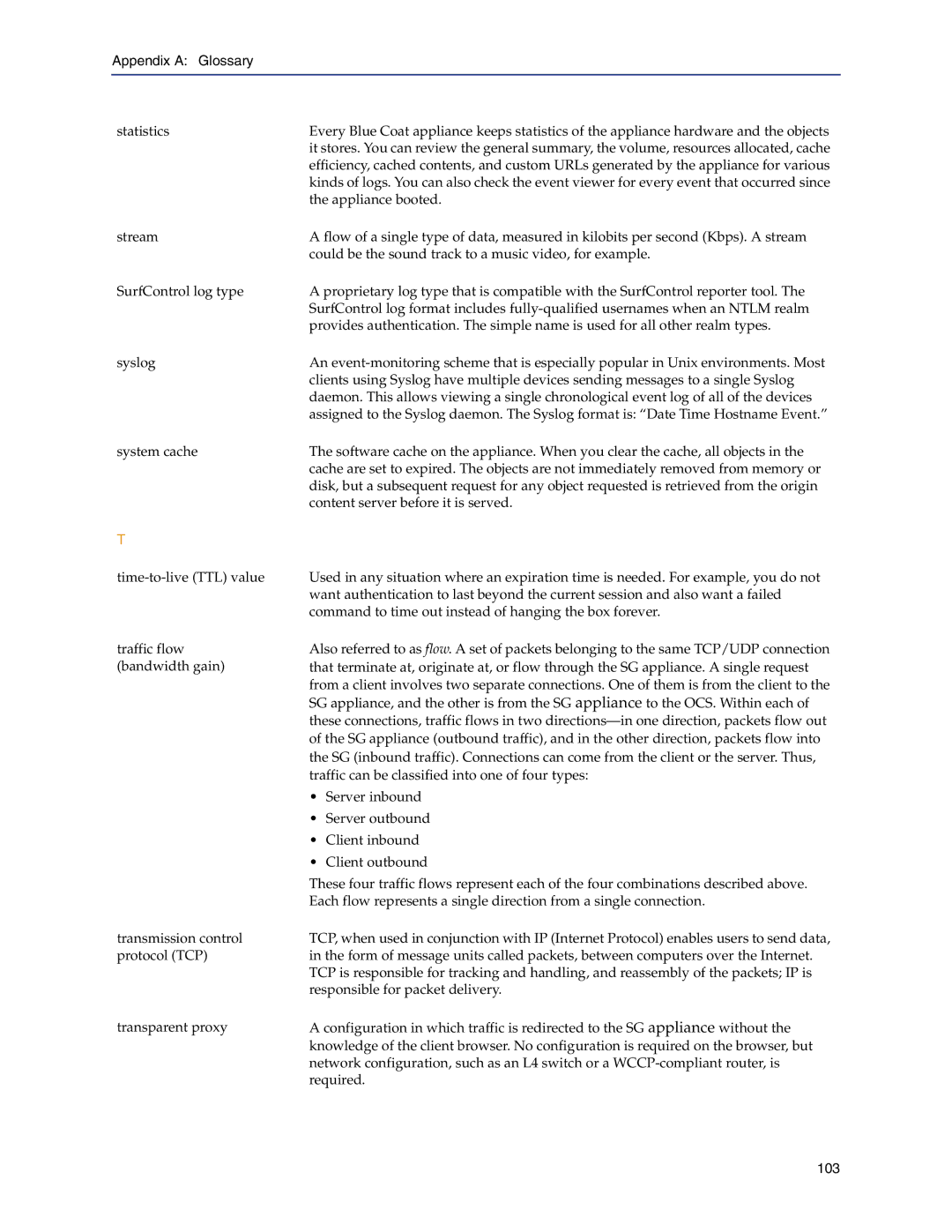Appendix A: Glossary
statistics | Every Blue Coat appliance keeps statistics of the appliance hardware and the objects | |
| it stores. You can review the general summary, the volume, resources allocated, cache | |
| efficiency, cached contents, and custom URLs generated by the appliance for various | |
| kinds of logs. You can also check the event viewer for every event that occurred since | |
| the appliance booted. | |
stream | A flow of a single type of data, measured in kilobits per second (Kbps). A stream | |
| could be the sound track to a music video, for example. | |
SurfControl log type | A proprietary log type that is compatible with the SurfControl reporter tool. The | |
| SurfControl log format includes | |
| provides authentication. The simple name is used for all other realm types. | |
syslog | An | |
| clients using Syslog have multiple devices sending messages to a single Syslog | |
| daemon. This allows viewing a single chronological event log of all of the devices | |
| assigned to the Syslog daemon. The Syslog format is: “Date Time Hostname Event.” | |
system cache | The software cache on the appliance. When you clear the cache, all objects in the | |
| cache are set to expired. The objects are not immediately removed from memory or | |
| disk, but a subsequent request for any object requested is retrieved from the origin | |
| content server before it is served. | |
T |
|
|
Used in any situation where an expiration time is needed. For example, you do not | ||
| want authentication to last beyond the current session and also want a failed | |
| command to time out instead of hanging the box forever. | |
traffic flow | Also referred to as flow. A set of packets belonging to the same TCP/UDP connection | |
(bandwidth gain) | that terminate at, originate at, or flow through the SG appliance. A single request | |
| from a client involves two separate connections. One of them is from the client to the | |
| SG appliance, and the other is from the SG appliance to the OCS. Within each of | |
| these connections, traffic flows in two | |
| of the SG appliance (outbound traffic), and in the other direction, packets flow into | |
| the SG (inbound traffic). Connections can come from the client or the server. Thus, | |
| traffic can be classified into one of four types: | |
| • | Server inbound |
| • | Server outbound |
| • | Client inbound |
| • | Client outbound |
| These four traffic flows represent each of the four combinations described above. | |
| Each flow represents a single direction from a single connection. | |
transmission control | TCP, when used in conjunction with IP (Internet Protocol) enables users to send data, | |
protocol (TCP) | in the form of message units called packets, between computers over the Internet. | |
| TCP is responsible for tracking and handling, and reassembly of the packets; IP is | |
| responsible for packet delivery. | |
transparent proxy | A configuration in which traffic is redirected to the SG appliance without the | |
| knowledge of the client browser. No configuration is required on the browser, but | |
network configuration, such as an L4 switch or a
